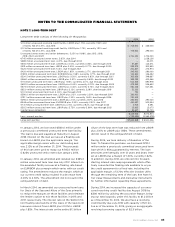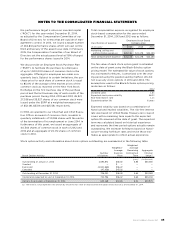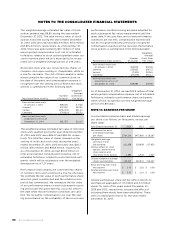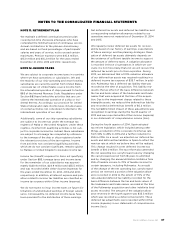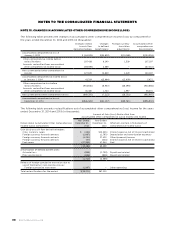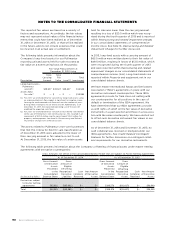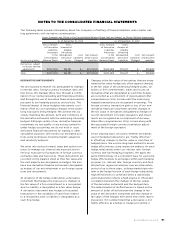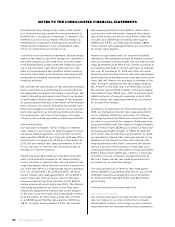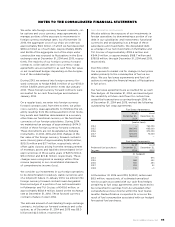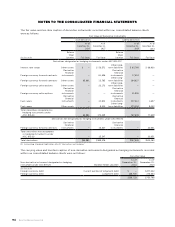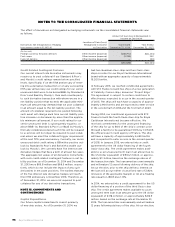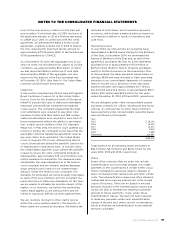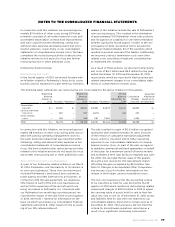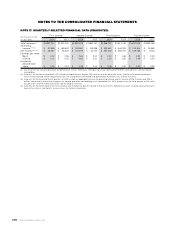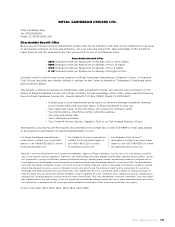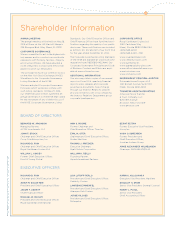Royal Caribbean Cruise Lines 2014 Annual Report Download - page 93
Download and view the complete annual report
Please find page 93 of the 2014 Royal Caribbean Cruise Lines annual report below. You can navigate through the pages in the report by either clicking on the pages listed below, or by using the keyword search tool below to find specific information within the annual report.
92 Royal Caribbean Cruises Ltd.
NOTES TO THE CONSOLIDATED FINANCIAL STATEMENTS
discontinued, any change in fair value of the deriva-
tive since the last date at which it was determined to
be effective is recognized in earnings. In addition, the
ineffective portion of our highly effective hedges is
immediately recognized in earnings and reported in
Other income (expense) in our consolidated state-
ments of comprehensive income (loss).
Cash flows from derivative instruments that are desig-
nated as fair value or cash flow hedges are classified in
the same category as the cash flows from the under-
lying hedged items. In the event that hedge account-
ing is discontinued, cash flows subsequent to the
date of discontinuance are classified within investing
activities. Cash flows from derivative instruments not
designated as hedging instruments are classified as
investing activities.
We consider the classification of the underlying hedged
item’s cash flows in determining the classification for
the designated derivative instrument’s cash flows. We
classify derivative instrument cash flows from hedges
of benchmark interest rate or hedges of fuel expense
as operating activities due to the nature of the hedged
item. Likewise, we classify derivative instrument cash
flows from hedges of foreign currency risk on our new-
build ship payments as investing activities and deriva-
tive instrument cash flows from hedges of foreign
currency risk on debt payments as financing activities.
Interest Rate Risk
Our exposure to market risk for changes in interest
rates relates to our long-term debt obligations includ-
ing future interest payments. At December 31, 2014,
approximately 28.5% of our long-term debt was effec-
tively fixed as compared to 34.6% as of December 31,
2013. We use interest rate swap agreements to mod-
ify our exposure to interest rate movements and to
manage our interest expense.
Market risk associated with our long-term fixed rate
debt is the potential increase in fair value resulting
from a decrease in interest rates. We use interest rate
swap agreements that effectively convert a portion of
our fixed-rate debt to a floating-rate basis to manage
this risk. At December 31, 2014 and 2013, we main-
tained interest rate swap agreements on the $420.0
million fixed rate portion of our Oasis of the Seas
unsecured amortizing term loan and on the $650.0
million unsecured senior notes due 2022. The interest
rate swap agreements on Oasis of the Seas debt
effectively changed the interest rate on the balance
of the unsecured term loan, which was $245.0 million
as of December 31, 2014, from a fixed rate of 5.41%
to a LIBOR-based floating rate equal to LIBOR plus
3.87%, currently approximately 4.20%. The interest
rate swap agreements on the $650.0 million unse-
cured senior notes effectively changed the interest
rate of the unsecured senior notes from a fixed rate
of 5.25% to a LIBOR-based floating rate equal to
LIBOR plus 3.63%, currently approximately 3.86%.
These interest rate swap agreements are accounted
for as fair value hedges.
Market risk associated with our long-term floating
rate debt is the potential increase in interest expense
from an increase in interest rates. We use interest rate
swap agreements that effectively convert a portion of
our floating-rate debt to a fixed-rate basis to manage
this risk. At December 31, 2014 and 2013, we main-
tained forward-starting interest rate swap agreements
that hedge the anticipated unsecured amortizing term
loans that will finance our purchase of Anthem of the
Seas. Forward-starting interest rate swaps hedging
the Anthem of the Seas loan will effectively convert
the interest rate for $725.0 million of the anticipated
loan balance from LIBOR plus 1.30% to a fixed rate of
3.86% (inclusive of margin) beginning in April 2015.
These interest rate swap agreements are accounted
for as cash flow hedges.
In addition, at December 31, 2014 and December 31,
2013, we maintained interest rate swap agreements
on our Celebrity Reflection term loan. Our interest
rate swap agreements effectively converted the inter-
est rate on a portion of the Celebrity Reflection unse-
cured amortizing term loan balance of approximately
$545.4 million from LIBOR plus 0.40% to a fixed rate
(including applicable margin) of 2.85% through the
term of the loan. Furthermore, at December 31, 2014,
we maintained interest rate swap agreements on our
Quantum of the Seas term loan. Our interest rate
swap agreements effectively converted the interest
rate on a portion of the Quantum of the Seas unse-
cured amortizing term loan balance of approximately
$735.0 million from LIBOR plus 1.30% to a fixed rate
of 3.74% (inclusive of margin) through the term of
the loan. These interest rate swap agreements are
accounted for as cash flow hedges.
The notional amount of interest rate swap agree-
ments related to outstanding debt and on our current
unfunded financing arrangements as of December
31, 2014 and 2013 was $2.9 billion and $3.0 billion,
respectively.
Foreign Currency Exchange Rate Risk
Derivative Instruments
Our primary exposure to foreign currency exchange
rate risk relates to our ship construction contracts
denominated in Euros, our foreign currency denomi-
nated debt and our international business operations.



